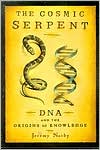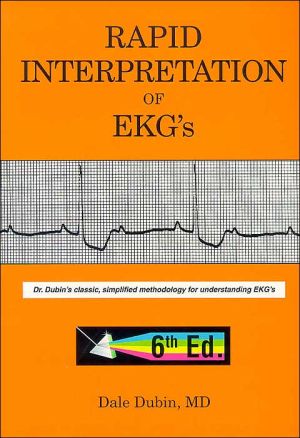The Cosmic Serpent: DNA and the Origins of Knowledge
This adventure in science and imagination, which the Medical Tribune said might herald "a Copernican revolution for the life sciences," leads the reader through unexplored jungles and uncharted aspects of mind to the heart of knowledge. In a first-person narrative of scientific discovery that opens new perspectives on biology, anthropology, and the limits of rationalism, The Cosmic Serpent reveals how startlingly different the world around us appears when we open our minds to it.
Search in google:
For ten years, Jeremy Narby explored the Amazonian rain forests, the libraries of Europe, and some of the world's most arcane scientific journals, following strange clues, unsuppressible intuitions, and extraordinary coincidences. He collected evidence and researched the seemingly impossible possibility that specific knowledge might somehow be transferred through DNA, the genetic information at the heart of every cell of every living thing, to a specially prepared consciousness. Narby demonstrates that indigenous and ancient peoples have known for millennia - and have even drawn - the double helix structure, something Western science discovered only in 1953. He also suggests that DNA and the life it codes for at the cellular level are "minded." Publishers Weekly Anthropologist Narby's very personal account of his encounters with Amazonian shamanism and his passionately researched syntheses of anthropological, biochemical, neurological and mythological scholarship fascinate but do not convince. His defense of the rights of indigenous peoples against usurpation by capitalist, technological countries is admirable; his methodology is not. Throughout, Narby appears to mistake enthusiasm for evidence and he takes similarities of form (e.g., any helical pattern, hexagon or snakelike figure) to be proof of identity or of casual connection: that the serpent of shamanic lore is DNA. Of his assertion that the Amazonians' specific knowledge of pharmacology derives from hallucinogenic trance (and not from some other more diffuse source), he undertakes no experimental test, offering the typical complaints that the "presuppositions" of science are too narrow to permit the test. Narby does well to question the assumptions of scientists who dismiss all teleology in favor of mechanistic interpretations that are often deeply inadequate, and he does well to inquire into the meaning of the vast commonality of forms between science and world mythologies, but his answers too often come off as groundless invention. He provides an intriguing detective story, wondrous visions and a wealth of fascinating information on genetic science, shamanism, etc., and he also offers some valuable thoughts on the parochial smallness of official science, but, overall, his book's greatest value, perhaps, is as a case study in the excesses of scholarship gone astray. (Apr.)
Chapter 1: Forest Television Chapter 2: Anthropologists and Shamans Chapter 3: The Mother of the Mother of Tobacco Is a Snake Chapter 4: Enigma in Rio Chapter 5: Defocalizing Chapter 6: Seeing Correspondences Chapter 7: Myths and Molecules Chapter 8: Through the Eyes of an Ant Chapter 9: Receptors and Transmitters Chapter 10: Biology's Blind Spot Chapter 11: "What Took You So Long?"\ Notes Bibliography Acknowledgments Permissions and Credits Index Bibliographic Index
\ Publishers Weekly - Publisher's Weekly\ Anthropologist Narby's very personal account of his encounters with Amazonian shamanism and his passionately researched syntheses of anthropological, biochemical, neurological and mythological scholarship fascinate but do not convince. His defense of the rights of indigenous peoples against usurpation by capitalist, technological countries is admirable; his methodology is not. Throughout, Narby appears to mistake enthusiasm for evidence and he takes similarities of form (e.g., any helical pattern, hexagon or snakelike figure) to be proof of identity or of casual connection: that the serpent of shamanic lore is DNA. Of his assertion that the Amazonians' specific knowledge of pharmacology derives from hallucinogenic trance (and not from some other more diffuse source), he undertakes no experimental test, offering the typical complaints that the "presuppositions" of science are too narrow to permit the test. Narby does well to question the assumptions of scientists who dismiss all teleology in favor of mechanistic interpretations that are often deeply inadequate, and he does well to inquire into the meaning of the vast commonality of forms between science and world mythologies, but his answers too often come off as groundless invention. He provides an intriguing detective story, wondrous visions and a wealth of fascinating information on genetic science, shamanism, etc., and he also offers some valuable thoughts on the parochial smallness of official science, but, overall, his book's greatest value, perhaps, is as a case study in the excesses of scholarship gone astray. (Apr.)\ \








